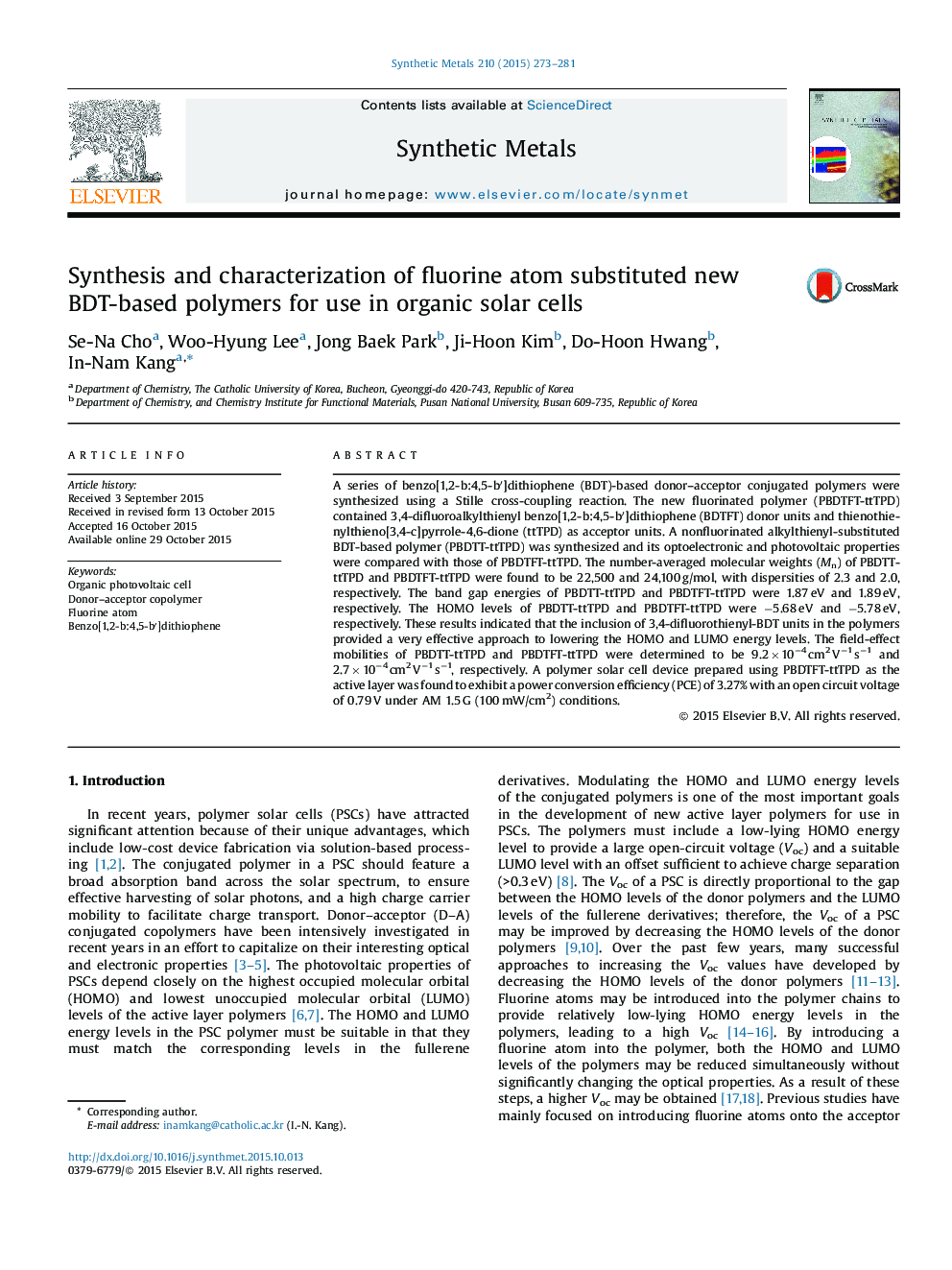| Article ID | Journal | Published Year | Pages | File Type |
|---|---|---|---|---|
| 1440327 | Synthetic Metals | 2015 | 9 Pages |
•A 3,4-difluoroalkylthienyl-substituted BDT-based donor–acceptor polymer (PBDTFT-ttTPD) was synthesized.•The fluorinated alkylthienyl substituents in the BDT unit yielded lower HOMO level compared to that in the corresponding nonfluorinated BDT.•A PBDTFT-ttTPD device exhibited a Voc of 0.79 V, which is 0.08 V larger than the value obtained from a PBDTT-ttTPD device.
A series of benzo[1,2-b:4,5-b′]dithiophene (BDT)-based donor–acceptor conjugated polymers were synthesized using a Stille cross-coupling reaction. The new fluorinated polymer (PBDTFT-ttTPD) contained 3,4-difluoroalkylthienyl benzo[1,2-b:4,5-b′]dithiophene (BDTFT) donor units and thienothienylthieno[3,4-c]pyrrole-4,6-dione (ttTPD) as acceptor units. A nonfluorinated alkylthienyl-substituted BDT-based polymer (PBDTT-ttTPD) was synthesized and its optoelectronic and photovoltaic properties were compared with those of PBDTFT-ttTPD. The number-averaged molecular weights (Mn) of PBDTT-ttTPD and PBDTFT-ttTPD were found to be 22,500 and 24,100 g/mol, with dispersities of 2.3 and 2.0, respectively. The band gap energies of PBDTT-ttTPD and PBDTFT-ttTPD were 1.87 eV and 1.89 eV, respectively. The HOMO levels of PBDTT-ttTPD and PBDTFT-ttTPD were −5.68 eV and −5.78 eV, respectively. These results indicated that the inclusion of 3,4-difluorothienyl-BDT units in the polymers provided a very effective approach to lowering the HOMO and LUMO energy levels. The field-effect mobilities of PBDTT-ttTPD and PBDTFT-ttTPD were determined to be 9.2 × 10−4 cm2 V−1 s−1 and 2.7 × 10−4 cm2 V−1 s−1, respectively. A polymer solar cell device prepared using PBDTFT-ttTPD as the active layer was found to exhibit a power conversion efficiency (PCE) of 3.27% with an open circuit voltage of 0.79 V under AM 1.5 G (100 mW/cm2) conditions.
